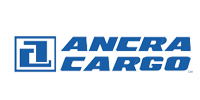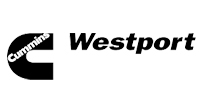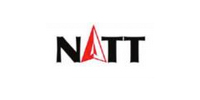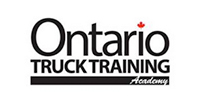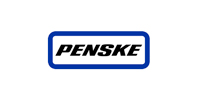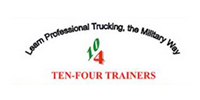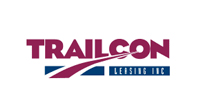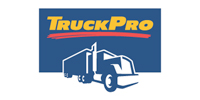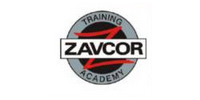Prepare to influence managers around the boardroom table
There are times when talking to the boss can be a frustrating experience. The best ideas for your fleet might appear to fall on deaf ears while the leaders of other divisions secure scarce budget dollars for initiatives of their own.
It’s almost like everyone is speaking a different language.
As strange as it may sound, members of the executive suite do speak a specific language, and successful fleet managers keep that in mind when communicating important information.
Steve Ropp, distribution manager at Molson Coors Canada, is always careful to include financial details when answering any fleet-related questions. “A lot of people think trailers and equipment grows on trees,” he says as an example. “But at the end of the day they’re business people, and when you explain the cost of a trailer ... they see more trailers are not the solution to every problem.
“Just about everybody understands finances in the business world.”
Dennis Shantz, director of fleet services for Home Hardware Stores, has adopted a similar approach in his own discussions. At first a preventive maintenance program looks like a cost, but the related budget transforms into an investment once senior managers understand that the work allows a trailer to stay on the road for an extra three to four years, he says. “There is a cost of doing business, but this is a smart cost.”
Shantz also stresses the need to provide some extra context for figures that can appear familiar to any fleet manager. Home Hardware’s out-of-service rate of 9.5% is admired among truckers, but he is careful to include information about industry averages at the same time. “When you’re talking about the CVOR [Ontario’s Commercial Vehicle Operator’s Registration] rating or infractions, you have to keep in mind that you have to explain it very well,” Shantz says. “Is that [number] good or bad or what led up to that?”
Still, Ben Decker, CEO of San Francisco-based Decker Communications, cautions against focusing on numbers alone. “Too often, what we do is we dive into data, and we dive into the background and the context and the reasoning,” he says. Decker stresses the need to make personal and emotional connections wherever possible, even in the boardroom. Discussions about a safety budget, for example, have added meaning when they are presented along with the story about an injury and how it could have been prevented. “That pulls you in.”
The arguments need to be supported with data, but the numbers do not have to be the focus of the story. “Don’t be afraid to put things in the appendix and don’t be afraid to have leave-behinds,” he says. “Too often we fall into the data dump.”
“It’s almost this fear that if I don’t tell you every detail, if I don’t give you all the information, then there’s going to be a weakness in the proposal,” adds Brad Holst, principal and executive director of Mandel Communications, which has business coaches in 55 countries.
One way Shantz makes the personal connections during his annual fleet updates is to remember that everyone around the table is still a driver in their own right. Reports about fuel costs become more meaningful when they describe how truck drivers are being steered toward different suppliers to save a few cents a litre, or why the skirts that motorists have seen on the sides of trailers are needed to improve aerodynamics. Since the business is owned by hardware retailers, discussions about the dangers of equipment downtime will also have a greater meaning when expressed as how a problem would impact delivery times.
It is not the only way the audience should be considered.
“What is going on in that decision maker’s world?” Holst asks. “Their day is really an ongoing string of meetings ... and, more often than not, someone is trying to influence them.” This is why fleet managers should focus as much on why an issue is important as how a problem can be resolved.
“We have to step back,” Decker says. “What do they need to know?”
It is an approach that can also help many presenters avoid the shop talk and acronyms which can leave executive teams confused and pull discussions off track. Rather than describing intricate details about Hours of Service regulations, for example, the impact on delivery times will resonate with everyone at the table.
“Our core business is selling beer,” Ropp says. “The number one thing here is to support the business. Production at our facility is at the top of the list. We have to support production. After that, we get the product to the end customer. Everyone understands that’s our focus.”
When it comes to preparing a presentation, both Decker and Holst value a “rule of threes” when presenting key information of any sort. That usually means offering the context for an issue, a recommendation, and then supporting information. When listing information it is a matter of creating, building and releasing tension.
The tone of a message will play another role in a fleet manager’s success, Holst adds, referring to one senior executive he recently interviewed. “He’s looking for the fire in the belly.” And there is a good reason. Every senior manager relies on the actions of others. “Are you the person who can make it happen?”
Equally, fleet managers should be careful not to act defensively if any questions are posed. “Remember: You want these questions. This is where you can explore the details,” Holst says. Those who pause for a moment before delivering a response, and consider why a question was asked and how it was asked, will be able to show an understanding of the underlying issue. The best answers will echo the concern before leading to the response.
It all helps to build a stronger relationship in the executive suite, just like every conversation before it. And that can be a valuable asset for those times when anyone challenges the role or importance of a private fleet.
“My personal school of thought is to do the job, make sure you’re a low cost but you provide the best service possible,” Ropp says. “If the knock at the door comes, I’ll be able to answer the questions.”
He also finds other ways to remain visible in the meantime. Freshly wrapped trailers, for example, are always parked within view of the corporate offices. “Some people at corporate or head office may not know we have a private fleet,” he says. Nothing puts that to rest like a trailer plastered with corporate branding elements.
Shantz also pays particular attention to the role of the fleet in branding efforts. Every call about a dirty piece of equipment is taken seriously, especially since the fleet invested in a new wash system as recently as two years ago. “They are our ambassadors out on the road,” he says, referring to the drivers.
“We bring a lot of other things to the table that you wouldn’t necessarily get a for-hire carrier to do for you,” Ropp adds.
It’s a vital message for any member of the executive team to understand.




